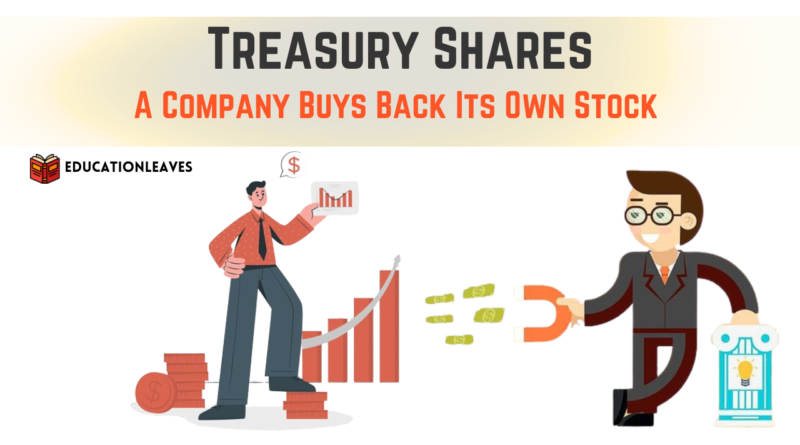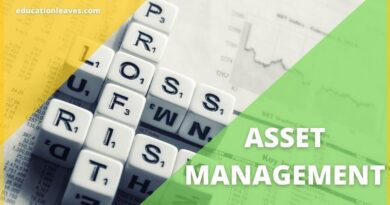Treasury Shares: A Company Buys Back Its Own Stock [PDF Included]
Imagine a company decides to buy back some of its outstanding shares from shareholders. These repurchased shares are no longer available for public trading and become known as treasury shares or treasury stock. In essence, the company takes ownership of a portion of its own stock. This might seem counterintuitive, but there are several reasons why a company might choose to do this.
In this article, we’ll explore the basic concept of treasury shares and how they come into existence. We’ll also discuss the difference between treasury shares and outstanding shares.
Let’s break it down:
- Outstanding Shares: These represent the total number of shares a company has issued and are available for trading by investors in the public market.
- Treasury Shares: These are previously outstanding shares that the company has repurchased, reducing the number of shares available for public trading.
Think of it like this: Imagine a company bakes 100 cookies (outstanding shares) and sells them all. Later, they decide to buy back 20 cookies (treasury shares). There are now only 80 cookies (outstanding shares) available for others to eat (trade).
What you are going to learn?
Why Do Companies Repurchase Shares? – Purpose of Treasury Shares
Now, let’s explore the various reasons why a company might choose to repurchase its shares:
- Increase Shareholder Value: When a company repurchases shares, it reduces the total number of outstanding shares. This can lead to an increase in earnings per share (EPS), a key financial metric that reflects a company’s profitability per share outstanding. A higher EPS can make the stock appear more attractive to investors, potentially driving up the stock price.
- Signal Confidence in the Company: By repurchasing shares, a company might be signaling its confidence in its future prospects. This can boost investor sentiment and encourage them to hold or even buy more shares.
- Defensive Measure Against Hostile Takeovers: A company with a significant amount of treasury stock makes it more expensive for a potential acquirer to buy a controlling stake. This is because the acquirer needs to purchase more shares to gain control, and treasury shares are not available for purchase.
- Employee Compensation: Companies can use treasury stock to compensate employees through stock option plans or employee stock ownership plans (ESOPs). This can incentivize employees and align their interests with those of shareholders.
- Capital Management: Repurchasing shares can be a way for a company to use excess cash. This can be preferable to simply keeping the cash on hand, as it can improve financial ratios and potentially benefit shareholders.
These are just some of the most common reasons why companies choose to buy back their own shares.
Repurchase Strategies – How Companies Buy Back Shares
Now that we understand the motivations behind treasury shares, let’s explore the various methods companies use to repurchase their own stock:
- Open Market Repurchases: This is the most common method, where the company simply buys shares on the stock exchange through a broker, just like any other investor. This allows for flexibility and avoids impacting the stock price significantly.
- Fixed-Price Tender Offers: In a tender offer, the company announces a specific price it’s willing to pay for a certain number of shares within a set timeframe. Shareholders can then decide whether to tender (sell) their shares at the offered price. This method can be used to acquire a larger block of shares quickly.
- Dutch Auction Tender Offers: Similar to a fixed-price tender offer, but here, shareholders submit bids specifying the number of shares they’re willing to sell and their desired price. The company then purchases shares at the lowest price point that fulfills its target number of shares.
- Stock Buyback Programs:** Companies can establish a formal program that authorizes them to repurchase shares over a specific period, often with a predetermined maximum amount of money they can spend. This provides more flexibility than a one-time tender offer.
- Accelerated Share Repurchase (ASR): This is a relatively new method where the company enters into an agreement with an investment bank to buy back a specific amount of stock over a set timeframe. The investment bank then buys the shares in the open market and delivers them to the company periodically.
The choice of repurchase method depends on several factors, including the company’s goals, market conditions, and the desired speed and volume of the buyback.
Accounting for Treasury Shares – Impact on Financial Statements
Repurchased shares, or treasury stock, have a unique impact on a company’s financial statements. Here’s how they are accounted for:
- Cost Method: This is the most common method used in the US. When a company repurchases shares, the cost they pay (including any brokerage fees) is recorded in a contra-equity account called “Treasury Stock” on the balance sheet. This account has a debit balance and reduces the total amount of shareholders’ equity.
- Impact on Ratios: Since treasury shares reduce shareholders’ equity, they also impact financial ratios that use this metric as a base. For example, earnings per share (EPS) can increase because the same amount of profit is now divided among fewer outstanding shares. However, it’s important to remember that this doesn’t necessarily reflect an increase in the company’s underlying profitability.
- Subsequent Sale of Treasury Stock: If the company decides to sell some of its treasury shares in the future, any difference between the selling price and the original repurchase cost is recorded in the income statement. A gain is recognized if the selling price is higher, and a loss is recognized if it’s lower.
- Retirement of Treasury Stock: Companies can also choose to retire treasury shares. This permanently removes them from the company’s capital structure and reduces both the “Treasury Stock” account and the number of outstanding shares.
Understanding these accounting principles is crucial for properly interpreting a company’s financial statements when they have treasury stock.
Weighing the Scales – Advantages and Disadvantages of Share Buybacks
While share buybacks, or treasury stock creation, can be a strategic tool for companies, there are both potential benefits and drawbacks to consider.
Advantages:
- Increased EPS and Share Price: As discussed earlier, repurchasing shares reduces the number of outstanding shares, which can lead to a higher EPS. This can make the stock appear more attractive to investors, potentially driving up the share price.
- Signaling Confidence: By repurchasing shares, a company might be signaling its confidence in its future prospects. This can boost investor sentiment and encourage them to hold or even buy more shares.
- Efficient Use of Capital: Repurchasing shares can be a way for a company to use excess cash more effectively than simply keeping it on hand. This can improve financial ratios and potentially benefit shareholders.
- Defense Against Takeovers: A company with a significant amount of treasury stock makes it more expensive for a potential acquirer to buy a controlling stake.
- Employee Compensation: Companies can use treasury stock for stock option plans or ESOPs, incentivizing employees and aligning their interests with shareholders.
Disadvantages:
- Reduced Investment in Growth: Companies may prioritize share buybacks over investments in research and development, innovation, or new equipment. This can hinder long-term growth prospects.
- Artificial Boost to Stock Price: The increased EPS due to share buybacks might not reflect a genuine increase in company profitability. This can create an inflated stock price that’s not sustainable.
- Income Inequality: Share buybacks primarily benefit existing shareholders, especially large institutional investors. This can exacerbate income inequality.
- Debt Financing: Companies might resort to debt financing to fund share buybacks, which can increase financial risk.
- Limited Transparency: Companies don’t always disclose their true motivations for share buybacks, making it difficult for investors to assess the long-term impact.
The decision of whether or not a share buyback is a positive step for a company requires careful consideration of both the potential advantages and disadvantages.
The Share Buyback Debate – Policy Considerations and the Future
Share buybacks have become a contentious issue, with ongoing debates about their impact on companies, investors, and the broader economy. Here’s a look at some key points:
- Short-Termism vs. Long-Term Growth: Critics argue that share buybacks incentivize a short-term focus on boosting stock price rather than investing in long-term growth initiatives like research and development. This can ultimately harm a company’s competitiveness and profitability.
- Income Inequality: Share buybacks primarily benefit existing shareholders, especially large institutional investors, who hold a significant portion of a company’s stock. This can exacerbate income inequality by concentrating wealth in the hands of a few.
- Financial Risk: Companies might resort to debt financing to fund share buybacks, increasing their financial leverage and vulnerability during economic downturns.
- Policy Proposals: In response to these concerns, there have been proposals for various policy changes, such as:
- Taxing share buybacks to discourage them and encourage companies to invest their cash in more productive ways.
- Requiring companies to disclose their rationale for share buybacks and how they impact employees and long-term growth plans.
- Implementing restrictions on how companies can use debt to fund share buybacks.
The future of share buybacks remains uncertain. While they offer potential benefits for companies and shareholders, the potential drawbacks and concerns about income inequality and short-termism are prompting calls for reform. Regulatory bodies and policymakers are likely to continue to debate the issue and may implement new regulations to ensure share buybacks are used responsibly and contribute to sustainable economic growth.




